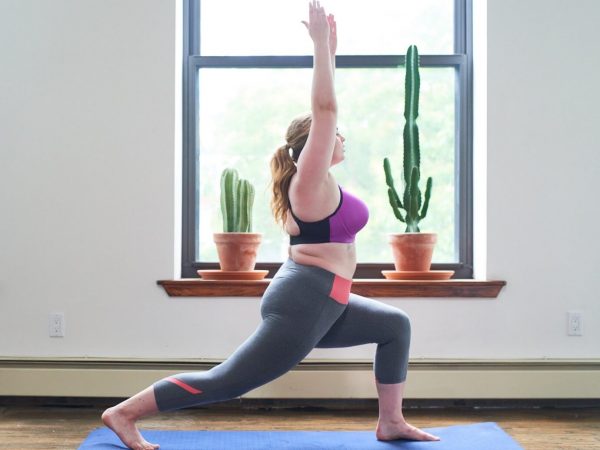Yoga is an art that is known to be of numerous benefits to those who choose to practice it. Yoga and meditation can be called the Ying-Yang with one balancing the other. A notable benefit of yoga and meditation is its ability to stimulate the endocrine glands into secreting the happy hormones, which include; serotonin, dopamine, endorphins and oxytocin.
Sounds unfamiliar? Well, I’m almost certain that you must have heard about that before. They are also referred to as the love hormone, cuddle hormone or even kissing hormones. These hormones are not only responsible for happiness, they also create feelings of well-being, pleasure and joy.
Yoga is an art that has been practiced for years. According to Wikipedia, yoga is a group of physical, mental, and spiritual practices or disciplines that originated in ancient India. Yoga is one of the six orthodox philosophical schools of Hinduism. It dates as far back as 3000 BC, and meditation, on the other hand is similar to yoga but not the same.
On the flip side, meditation is a practice where an individual uses a technique – such as mindfulness or focusing the mind on a particular object, thought, or activity – to train attention and awareness, and achieve a mentally clear and emotionally calm and stable state.
Unlike yoga, which has to do with taking certain posture and stances, breathing techniques, meditation has to do with you clearing your mind and focusing on just one thing. There are a lot of health and psychological effect of breathing meditation, which we encourage everyone to experience.
Yogis would tell you of the numerous benefits you can get from these practices. 7 -10 minutes of yoga a day would make you more relaxed and happier, literally! So, let’s take a deep dive as we look at the various happy hormones in which meditation and yoga can help to boost.

Oxytocin
Popularly called the “love hormone”, oxytocin helps promote the feeling of not just love alone but also bonding. It is also stimulated by affectionate touches, kissing, cuddling and plays a key role in sexual arousal. For non-sexual relationships help with bonding and creating the feeling of trust. It is also the childbirth hormone responsible for the bond between mother and child.
The poses and deep breathing techniques practiced in yoga, including asanas all encourages and helps the body to relax and to release oxytocin. All yoga routines are often ended with postures such as the makarasana or Shavasana, these postures are deeply relaxing which also help with releasing a ton load of oxytocin.
Meditation is also known to be linked with positive emotions hence generating oxytocin. Oxytocin hormone reduces stress and can be said to be the body’s anti-stress or stress coping mechanism which helps in reducing cortisol and blood pressure levels.

Dopamine
This hormone is responsible for regulating motivations and emotions. It is a hormone and a neurotransmitter which is oftentimes referred to as the “reward hormone” It is also referred to as the “feel-good hormone”
It is associated with rewards and pleasure. That is, your body release this hormone when you get a reward. Also, activities that give you pleasure, such as eating your favorite chocolate cake, sex, shopping and the likes.
A typical scenario is when you are walking past a cake shop with the smell of your favorite chocolate wafting through or you see a beautiful dress on display at the mall, these actions will trigger your body to release dopamine. Dopamine also contributes to the feeling of not just happiness, but also alertness, motivation and focus.
Yoga practices such as a vigorous Vinyasa and following up with a relaxation technique known as yoga Nidra and finishing off with meditation can highly boost your dopamine levels. Studies show that yoga Nidra increases the level of dopamine in the brain by 65% on average.
Low levels or deficiency of dopamine in the body leads to poor ability of problem-solving, anxiety, mood swings and low energy level. Meditation and yoga are great way to up your dopamine levels if you are looking for a boost.

Endorphins
Reducing pain and increasing pleasure, endorphins are said to be the body’s natural pain killers. Endorphins, deriving its name from endogenous,” meaning from within the body, and “morphine”. They are released when the body senses pleasure or pain. Other activities such as yoga, meditation, eating, sex and exercise also caused the body to release endorphins. According to research, people who practice yoga experience an increase in endorphin level after a yoga session, this feeling is popularly known as “yoga high”

Serotonin
This neurotransmitter is responsible for one’s mood and behavior. Mood and behavior are influencing factor in how happy a person is. The art of yoga and meditation improves your overall feeling of well-being. Certain yoga postures such as forward bends and inversions are not only therapeutic but are also important for serotonin production.
Low levels of serotonin are linked to fatigue, depression, insomnia and bouts of sadness. Generally, yoga and meditation give a lot of benefits to those who practice them, but if you’re looking for ways to give your happy hormones a boost, then get ready for some yoga and meditation time.
Wrap Up
Without a doubt, it is very obvious that meditation and yoga are both ageless practices that have been a handy source of happiness and calmness to its practitioners.
With such a great depth of various health benefits that comes with the practice of yoga and meditation, of which boosting the happy hormones such as serotonin, endorphins, dopamine and oxytocin is a confirmed fact, you too can partake in these benefits without breaking a sweat.
For a more blogs relating to mental health and meditation, kindly click here to get started.
